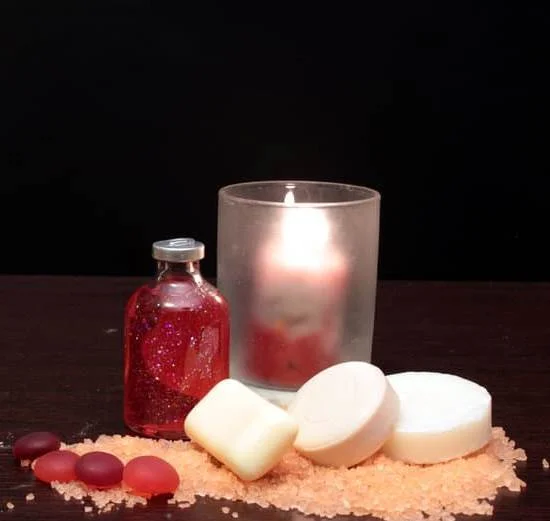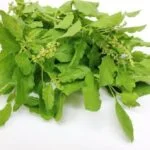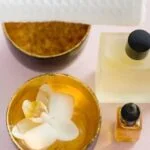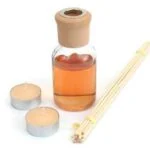Tea tree oil has long been valued for its multitude of health benefits and versatile uses. In recent years, it has gained significant popularity in the world of aromatherapy due to its potential impact on mental and physical well-being. In this article, we will explore how to use tea tree oil for aromatherapy, including its history, benefits, and practical applications.
Aromatherapy is a holistic healing treatment that uses natural plant extracts to promote health and well-being. When it comes to essential oils for aromatherapy, tea tree oil stands out for its antibacterial, antiviral, and antifungal properties. This powerful oil has been used for centuries by indigenous Australians for its medicinal purposes and was later adopted by the Western world for its therapeutic benefits.
In addition to its historical significance, tea tree oil offers a myriad of advantages when used in aromatherapy practices. From stress relief and mood enhancement to respiratory support and relaxation, the potential benefits of tea tree oil are vast.
It’s important to understand the fundamentals of tea tree oil in order to harness its full potential for an effective aromatherapy experience. So let’s dive into what makes tea tree oil so special and how you can use it to elevate your mental and physical health through aromatherapy.
Understanding Tea Tree Oil
Tea tree oil, also known as melaleuca oil, is a popular essential oil that has been used for centuries in traditional medicine and skincare. It is derived from the leaves of the Melaleuca alternifolia plant, which is native to Australia. The oil is well-known for its potent antibacterial, antiviral, and antifungal properties, making it a versatile and effective choice for aromatherapy.
The main active ingredient in tea tree oil is terpinen-4-ol, which contributes to its antimicrobial effects. Additionally, it contains other compounds such as cineole, pinene, and terpinenes that further enhance its therapeutic properties. Due to its chemical composition, tea tree oil has been widely studied and has demonstrated antimicrobial activity against various pathogens, including bacteria, viruses, and fungi.
When selecting a high-quality tea tree oil for aromatherapy use, it’s important to look for products that are 100% pure and undiluted. Choose oils that are sourced from reputable suppliers who adhere to strict quality standards. Avoid oils that have been adulterated with synthetic chemicals or fragrances. Look for certification labels such as “organic” or “pure essential oil” to ensure the authenticity and purity of the product.
In addition to its antimicrobial properties, tea tree oil has been shown to have anti-inflammatory and soothing effects on the skin when used in aromatherapy. Its fresh and medicinal aroma also makes it a popular choice for promoting mental clarity and relaxation in therapeutic settings. Incorporating tea tree oil into your aromatherapy routine can provide various benefits for both physical and emotional well-being.
| Benefits | Properties |
|---|---|
| Antibacterial | Terpinen-4-ol |
| Antiviral | Cineole |
| Antifungal | Pinene |
Choosing the Right Tea Tree Oil
When it comes to using tea tree oil for aromatherapy, selecting a high-quality product is essential for achieving optimal results. With the market flooded with various options, it’s important to know how to choose the right tea tree oil for your aromatherapy needs. Here are some tips to help you select a high-quality tea tree oil:
- Check for purity: Look for 100% pure tea tree oil without any added synthetic ingredients or fillers. Pure tea tree oil will provide the maximum therapeutic benefits when used in aromatherapy.
- Consider sourcing: Opt for tea tree oil that has been sourced from reputable suppliers or regions known for producing high-quality essential oils. Australian tea tree oil, in particular, is highly regarded for its purity and potency.
- Look out for potential adulteration: Be wary of tea tree oil that may have been diluted or adulterated with other oils or substances. Ensure that the product has been tested and certified for purity by reputable organizations.
By following these guidelines, you can ensure that you are getting a high-quality tea tree oil that is suitable for use in aromatherapy. Whether you plan to use it in a diffuser blend, massage oil, or room spray, choosing the right tea tree oil will enhance the overall effectiveness of your aromatherapy practice.
In addition to these tips, it’s also worth considering organic and sustainably sourced options if environmental and ethical considerations are important to you. Ultimately, investing in a high-quality tea tree oil will not only benefit your mental and physical well-being but also support responsible and sustainable practices within the essential oils industry.
Safety Precautions
Tea tree oil is a potent essential oil that offers a wide range of benefits when used in aromatherapy. However, it’s important to understand the potential risks and side effects associated with its use, as well as the necessary safety precautions to ensure a positive and safe experience. Here are some guidelines for using tea tree oil in aromatherapy:
1. Dilution Ratios: Tea tree oil is highly concentrated and should never be applied directly to the skin at full strength. It is recommended to dilute tea tree oil with a carrier oil, such as coconut oil or almond oil, before applying it to the skin. The general dilution ratio for tea tree oil in aromatherapy is 1-2%, which equals 1-2 drops of tea tree oil per teaspoon of carrier oil.
2. Patch Test: Before using tea tree oil on a larger area of the skin, it’s important to perform a patch test to check for any adverse reactions. Apply a small amount of diluted tea tree oil to a small area of skin and wait 24 hours to see if any redness, itching, or irritation occurs.
3. Proper Application Methods: When using tea tree oil for aromatherapy, it can be inhaled through steam inhalation or a diffuser, or applied topically through massage oils or room sprays. Inhalation is generally considered safer than topical application, especially for individuals with sensitive skin.
It’s crucial to follow these safety precautions when using tea tree oil for aromatherapy to avoid any potential adverse effects and maximize the therapeutic benefits of this powerful essential oil.
Aromatherapy Benefits of Tea Tree Oil
Aromatherapy has long been revered for its ability to promote mental and emotional well-being, and tea tree oil is no exception. When used in aromatherapy, tea tree oil can offer a variety of benefits, including stress relief, mood enhancement, and relaxation. This section will explore the potential mental and emotional benefits of using tea tree oil in aromatherapy and provide insights into how this natural remedy can positively impact overall well-being.
Stress Relief
Tea tree oil has been found to have calming properties that can help alleviate stress and anxiety. When diffused or inhaled, the aroma of tea tree oil can promote a sense of tranquility and relaxation. Its soothing effects on the mind make it an excellent choice for those seeking natural remedies for stress relief.
Mood Enhancement
Aromatherapy with tea tree oil has been known to uplift the mood and improve overall mental well-being. The refreshing scent of tea tree oil can help combat feelings of fatigue and low spirits, making it a valuable tool for enhancing mood and promoting a positive outlook on life.
Relaxation
The soothing aroma of tea tree oil can create an ambiance of peace and relaxation, making it an ideal choice for use during meditation or self-care practices. Whether used in a diffuser or added to bathwater, tea tree oil can help create a calming environment that fosters deep relaxation.
When exploring how to use tea tree oil for aromatherapy, individuals should consider incorporating this versatile essential oil into their daily routines to experience the powerful mental and emotional benefits it has to offer.
DIY Tea Tree Oil Blends
Tea tree oil is a versatile essential oil that can be used in a variety of DIY aromatherapy blends. Whether you want to create custom diffuser blends, massage oils, or room sprays, tea tree oil can be a valuable addition to your aromatherapy toolkit. In this section, we will explore different recipes and instructions for incorporating tea tree oil into your homemade aromatherapy products.
When creating diffuser blends, tea tree oil can be combined with other essential oils to enhance its soothing and purifying properties. For example, you can mix a few drops of tea tree oil with lavender and eucalyptus essential oils for a refreshing and cleansing blend that promotes clear breathing and relaxation. Simply add the essential oils to water in your diffuser according to the manufacturer’s instructions, and enjoy the aromatic benefits.
To make a homemade massage oil using tea tree oil, you can combine it with carrier oils such as coconut or sweet almond oil. Tea tree oil has natural antibacterial and anti-inflammatory properties, making it an excellent choice for massages that target sore muscles or skin irritation.
A simple recipe could include 5-10 drops of tea tree oil mixed with 1 ounce of carrier oil. Be sure to perform a patch test before applying any new blend to your skin.
Finally, for those looking to freshen up their living space, creating a room spray with tea tree oil can help eliminate odors and purify the air. You can mix tea tree oil with water and witch hazel or vodka in a spray bottle for easy application. Adding lemon or peppermint essential oils can further enhance the cleansing effect, leaving your home smelling fresh and clean.
Incorporating tea tree oil into these DIY blends not only adds an invigorating aroma but also brings its potential health benefits to the forefront of your aromatherapy practice.
| Tea Tree Oil Blend | Ingredients |
|---|---|
| Diffuser Blend | 4 drops of tea tree oil, 3 drops of lavender oil, 2 drops of eucalyptus oil |
| Massage Oil | 5-10 drops of tea tree oil + 1 ounce carrier oils (coconut or sweet almond) |
| Room Spray | 8-10 drops of tea tree + witch hazel/vodka + water mixture in a spray bottle |
Using Tea Tree Oil for Respiratory Health
Tea tree oil is known for its powerful antibacterial, antiviral, and antifungal properties, making it a popular choice for treating respiratory issues through aromatherapy. When inhaled, tea tree oil can help clear the airways, reduce congestion, and provide relief from allergies and sinusitis. This natural remedy has been used for centuries in traditional medicine to support respiratory health and improve overall well-being.
One of the most effective ways to use tea tree oil for respiratory health is through steam inhalation. Simply add a few drops of tea tree oil to a bowl of hot water, cover your head with a towel, and inhale the steam for several minutes. This method can help to open up the sinuses, reduce inflammation, and ease breathing difficulties. For added benefits, consider adding other essential oils like eucalyptus or peppermint to enhance the decongestant effects.
In addition to steam inhalation, tea tree oil can also be used in a diffuser or humidifier to purify the air and alleviate respiratory symptoms. By dispersing the aromatic molecules into the air, these devices can create a soothing and therapeutic environment that promotes easier breathing and relieves discomfort associated with congestion and allergies. However, it is important to use caution when using tea tree oil in a diffuser as excessive exposure may cause irritation in sensitive individuals.
Overall, incorporating tea tree oil into your aromatherapy routine can provide significant benefits for respiratory health. Whether you choose to inhale it directly or diffuse it into the air, this natural remedy has the potential to alleviate symptoms of congestion, allergies, and sinusitis while promoting overall well-being. Always remember to consult with a healthcare professional before using essential oils for treating specific health conditions or if you are pregnant or nursing.
Conclusion and Recommendations
In conclusion, incorporating tea tree oil into your aromatherapy routine can offer numerous benefits for both your mental and physical well-being. With its antibacterial, antiviral, and antifungal properties, tea tree oil has the potential to promote relaxation, relieve stress, and even provide respiratory support. When choosing a tea tree oil for aromatherapy, it’s important to prioritize purity and quality. Look for reputable sources that offer pure, unadulterated products to ensure the best results.
When using tea tree oil for aromatherapy, it’s crucial to observe safety precautions to prevent any adverse effects. Proper dilution ratios and application methods should be followed to avoid skin irritation or other complications. Additionally, considering the potential benefits of DIY blends can enhance your aromatherapy experience even further.
For those interested in trying out tea tree oil for aromatherapy, there are various reputable sources where you can purchase high-quality products. It is recommended to choose reliable retailers or essential oil brands with a proven track record of providing pure and ethically sourced tea tree oil.
By following these guidelines and exploring the diverse ways of using tea tree oil in aromatherapy as outlined in this article, individuals can harness its full potential and reap its many benefits for overall wellness.
Frequently Asked Questions
Is Tea Tree Oil Safe for Aromatherapy?
Tea tree oil is generally considered safe for aromatherapy when used properly. However, it’s important to do a patch test on the skin first to check for any allergic reactions. Pregnant women and children should also use caution.
Can You Apply Tea Tree Essential Oil Directly to Skin?
It is not recommended to apply tea tree essential oil directly to the skin without diluting it first. This is because it can cause irritation or allergic reactions in some individuals. It’s best to mix it with a carrier oil before applying.
How Many Drops of Tea Tree Oil for Diffuser?
The number of drops of tea tree oil for a diffuser depends on the size of the diffuser and personal preference. As a general guideline, 3-5 drops for small diffusers and 5-10 drops for larger ones is usually sufficient to create a pleasant aroma in the air.

Are you looking for a natural way to improve your health and wellbeing?
If so, aromatherapy may be the answer for you.





